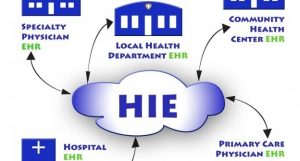Health Information Exchange | Digital Health Records
Table of Contents
Health Information Exchange
One of the greatest benefits of victimization machine systems in health information exchange is their ability to provide useful information for decision-making by health care professionals. As such, their primary purpose is to increase the standard and power of a supply. To realize these functions, health information exchange systems should meet standards of capacity, quality, data sciences, safety, reliability, and timeliness regarding knowledge storage and processes. One of the most existing problems during this space is the incontrovertible fact that scientific applications do not share information or share it at a low level. Once communication between completely different health information exchange systems exists, it is mainly achieved through proprietary integrated solutions.
Fundamentally, health information exchange in the digital health record between organizations, consistent with nationally recognized standards. The objective is to convey an individual’s health information to the point of care where it is needed. For example, if you need medical attention, your medical information is with you, no matter which provider you visit. If you have a small medical practice, you can benefit from digitally sharing patient information with hospitals, labs, pharmacies, and other physician practices while remaining independent and in control of your practice’s data.
Digital Health Records

The single connection to the HIE hub provides access to a wealth of information, offering bi-directional workflow and full participation in the healthcare community without the cost and management of building separate interfaces. One product that allows physicians to exchange health information is called DHR (Digital Health Record). Some of these providers are NextGen, AllScripts, Medisoft. The Government is offering a stimulus incentive of $44,000 to $64,000 (beginning in 2011) to move to HRM. In summary, one thing is certain: we can all expect many changes in this area in the coming years. The current health landscape is not going to be the same. The health industry has lagged in adopting digital health records, but no longer using technology will be an option.
Conclusion:
![]()
The purpose of this study is to review the previously available literature on the outcomes of EHRs on population health. Health data technology is becoming widely used, but trade has still not reached general access. It’s our goal to answer whether or not the utilization of Digital Health Records will play an important role in the health of populations, further establishing inhibitors to its adoption and key use. In today’s world, it is essential to increase the technology in hospitals and know the complete patient’s background information to the doctor who can also suggest better by looking through previous background digital health records.




